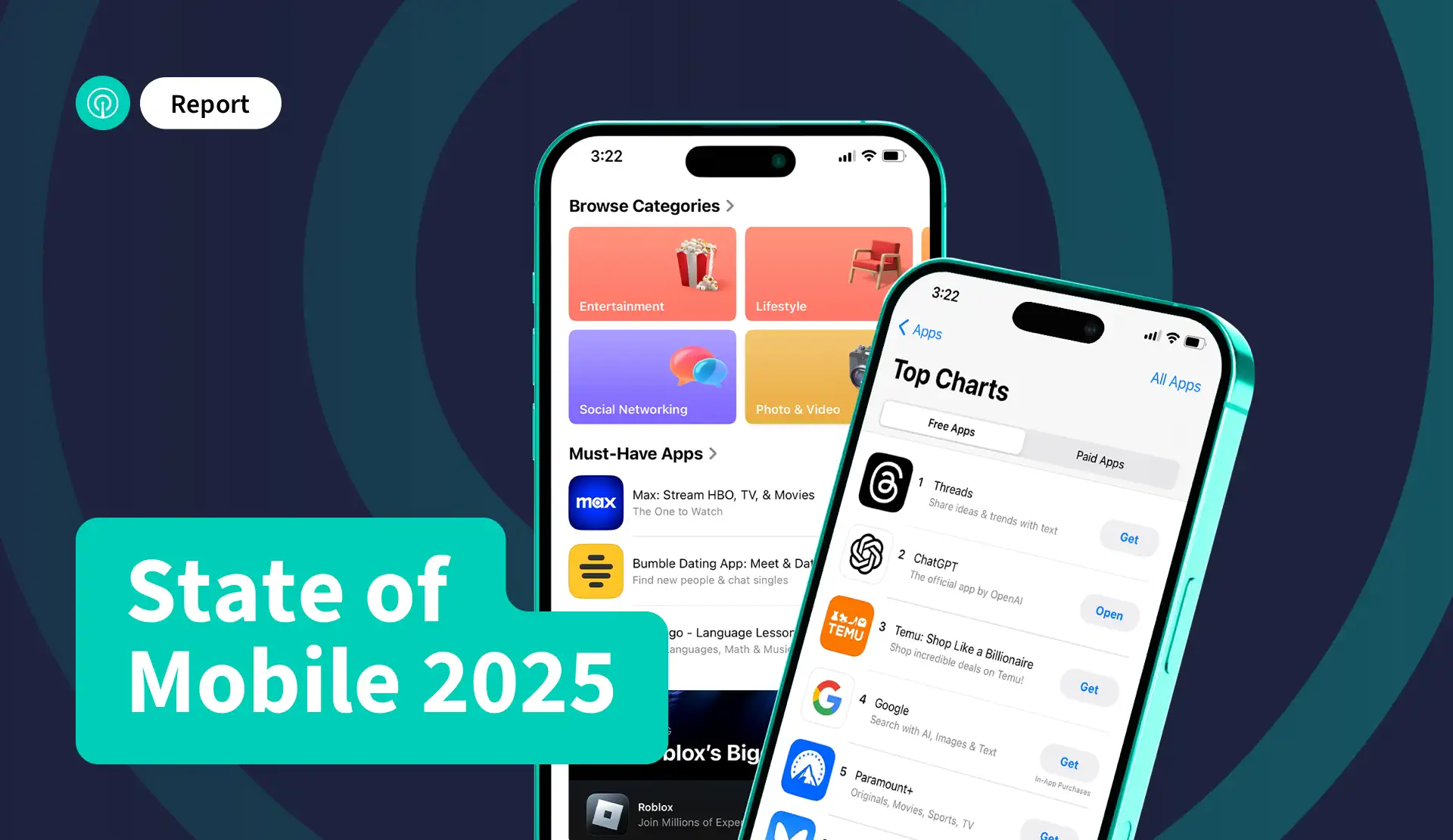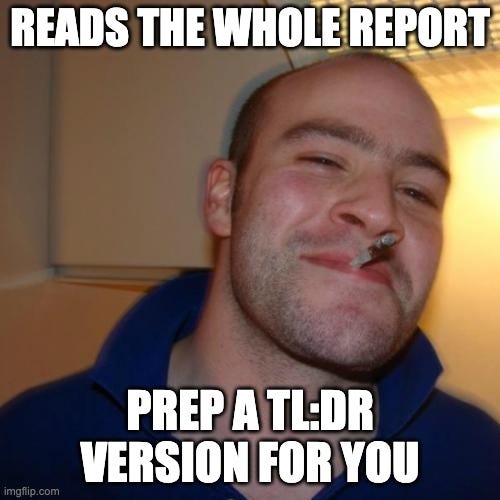About the author call_made
Matej Lancaric
A true mobile marketing enthusiast currently working as a UA consultant.

HighlightsJournal 23 Matej Lancaric April 2
Sensor Tower recently released a 50-page report about the state of mobile gaming in 2025. I spent several hours reading and preparing a TL: DR version for you. I added some custom graphs and creatives for visual experience! Enjoy ..

Marketers significantly upped ad spend and creative output to re-engage lapsed users and target high-LTV players.
Overall, mobile gamer activity is on the upswing. The chart below highlights the rebound in time spent and session counts from 2023 to 2024, with play sessions per user climbing markedly and total hours played also rising year-over-year. This re-engagement trend suggests that 2024’s growth was driven by deeper engagement of existing players rather than a flood of new users

Source: Sensor Tower – Global YoY growth in total time spent and sessions (2024 vs 2023).
Several titles achieved outsized success in 2024, offering lessons in effective game marketing and product strategy:

Dream Games’ match-3 puzzler continued its meteoric rise and dominated the Puzzle genre in 2024. Its success is attributed to relentless content updates and strong live operations – frequent new levels, events, and rewards kept players engaged and spending.

Royal Match’s ability to retain a loyal user base (built over time since its humble beginnings) showcases the compounding value of player retention.
This battle royale maintained its status as a global phenomenon, spearheading download growth in the Shooter category. Free Fire’s focus on emerging markets (e.g. Latin America, Southeast Asia) and device optimization helped it capture a massive audience.

Aggressive community engagement (esports, social media) and localized events kept its player community active, translating to increased time spent per user and resilient monetization.
New Strategy 4X Hits – Titles launched in 2023, like Last War: Survival and Whiteout Survival, broke out in 2024 by blending deep 4X strategy gameplay with hypercasual-style accessibility.

They employed simplified onboarding and splashy ad creatives to attract broad audiences, then monetized effectively through in-game purchases.
Their success in both Western and Asian markets underlines that combining engaging depth + easy entry + clever ads can yield global hits.
Hybrid Monetization on the Rise: Game developers are increasingly pairing in-app purchases with ads to maximize revenue.
In fact, titles blending ad monetization with IAP saw IAP revenue grow ~37% YoY. Combining these models has emerged as an optimized strategy, as it allows monetizing both spenders and non-spenders.
Even traditionally IAP-focused genres experimented with rewarded ads, while former hypercasual studios added light IAP loops – giving birth to more “hybridcasual” games that diversify their income streams.
2024 underscored that live-operated games (with continual events, updates, and season passes) now dominate earnings. Mature games with robust live ops (e.g. Roblox, Candy Crush, Genshin Impact) retained users and captured the lion’s share of spend – 84% of all mobile gaming revenue came from games running live events/content.
Developers doubled down on player retention and lifecycle value; as a result, live ops is no longer optional but a key requirement for long-term success in a saturated market. Teams focused on engaging existing players through new content, rather than relying on a surge of new users, given the privacy-driven advertising headwinds.
The geography of mobile games revenue is shifting. North America contributed the most absolute revenue growth in 2024, climbing to an estimated $12B in IAP (about +14% YoY) thanks to big-spending titles and an improving U.S. economy. Emerging markets also shone – Latin America’s mobile game revenue jumped ~13%, led by Brazil’s expanding player base and its role as a testing ground for new games.
The Middle East saw the highest growth at +18% YoY, as investments and a rising local gamer population turned the region into an emerging powerhouse. In contrast, Asia-Pacific (the largest region) saw a slight decline (–3% YoY) in mobile game revenue, driven by market saturation in China and correction after pandemic highs.
The chart below breaks down 2024’s mobile game revenue by region, highlighting North America’s and emerging markets’ gains versus Asia’s minor dip. When allocating resources for 2025 user acquisition and localization, marketers should note where growth is accelerating (e.g., the Middle East, and Latin America).

Source: Sensor Tower – 2024 mobile game IAP revenue by region (US$) and YoY growth.
Privacy changes (like ATT on iOS) continued to make acquiring new users more challenging and costly. In response, many publishers refocused on existing titles and re-engaging lapsed users instead of launching risky new IP. Marketers leaned into new channels and creative tactics when they sought new users.
TikTok emerged as a key UA channel for games, thanks to its massive reach and creator-driven content, growing its share of mobile game ad impressions significantly. On the in-app side, networks like AppLovin gained prominence in the UA channel mix.
Moreover, even mid-core and casual games adopted hypercasual-style ad creatives – simple, attention-grabbing ads with clear hooks – to broaden the appeal and improve acquisition efficiency. This trend of borrowing creative techniques from hypercasual marketers helped lower CPI and attract a wider funnel of players for deeper games.
There was a stark contrast between the genres that drive downloads and those that drive revenue. In 2024, Simulation and Puzzle games led global downloads – each genre delivered about 20% of total installs, thanks to their mass-market appeal and many hypercasual hits.
However, Strategy and RPG games commanded the highest consumer spend – Strategy alone generated $17.5B (21.4% of global gaming revenue) and RPGs $16.8B (20.5%) – despite these hardcore genres representing only ~7% of downloads combined.
Casino titles also monetized strongly, ranking #4 by revenue with $11.7B (14.3%), but had a minimal share of installs. This gap highlights that casual genres capture broad audiences at low ARPU, whereas mid-core genres greatly monetize a smaller, hardcore user base.
The following chart illustrates this genre split by comparing share of downloads vs. share of revenues for key genres. Marketers can see that Puzzle and Simulation dominate in download volume, whereas Strategy and RPG massively over-index in revenue. This underlines the importance of aligning marketing goals (scale vs. revenue) with the right genre mix.

Source: Sensor Tower – Genres as % of 2024 global downloads vs. IAP revenue (Puzzle & Simulation lead in installs, while Strategy & RPG lead in spend).
To capitalize on these insights, mobile game marketers should consider the following actions:
AS in the Triple Match City podcast here:
Take inspiration from hypercasual marketers when designing ad creatives. Emphasize clear, catchy concepts and thumb-stopping visuals that quickly showcase gameplay fun. Many top-grossing games lowered acquisition costs by running simple, meme-worthy ads akin to hypercasual promotions.
Continuously A/B test creatives on channels like TikTok – sometimes a lo-fi, humorous ad can outperform polished trailers in driving installs. Also consider influencer-driven content (e.g. TikTok trends, YouTube shorts) to tap into organic virality.
Given the dominance of live service games, ensure your 2025 marketing calendar is tied to in-game events. Coordinate UA and re-engagement campaigns around new content releases, holidays, and collaborations.
Promote your game’s ongoing updates heavily – players need to know the game is alive and rewarding to return to. Invest in CRM efforts (push notifications, email, community management) to bring back lapsed users when fresh events drop.
Remember that games with robust live ops captured the vast majority of revenue. Prioritize player retention tactics such as loyalty programs, limited-time modes, and community challenges to extend lifetime value.
As seen with 2024’s winners, keeping your existing players happy and engaged is far more cost-effective than acquiring new ones in the current privacy-first UA landscape.
About the author call_made
A true mobile marketing enthusiast currently working as a UA consultant.
Please login or subscribe to continue.
No account? Register | Lost password
✖✖
Are you sure you want to cancel your subscription? You will lose your Premium access and stored playlists.
✖